
views
X
Expert Source
Chai SaechaoPlant Specialist
Expert Interview. 20 February 2020.
It has a thick, often braided, stem, large green leaves, and can grow up to 10 feet (3.0 m) tall. Pruning your money tree will ensure it does not become overgrown and maintains a nice shape. Start by deciding when it is time to prune your plant and then use sharp gardening shears to trim it. Make sure you pinch and trim the tree regularly so it stays healthy and grows beautifully.
Deciding When to Prune
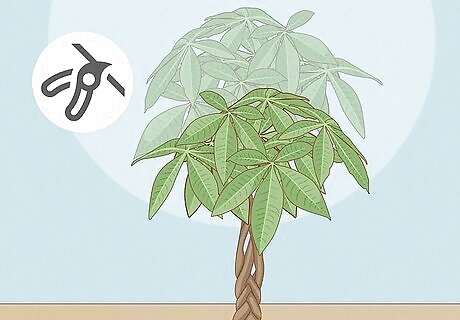
Prune the tree if it becomes overgrown. Money trees should be pruned if they start to grow too tall or wide for their pots. You may notice branches or leaves extending out from the top or sides of the tree. This means it’s time to prune the tree to reshape it and encourage healthy growth.

Remove brown or wilted leaves with pruning. Dry, brown leaves may be an indication that the air is too dry or cold around the tree. The tree may also not be getting enough natural light.
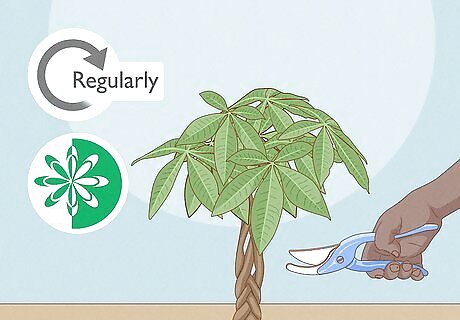
Do a regular pruning in the spring. Money trees maintain their shape best if they are pruned at least once in the springtime. Make it a point to prune your tree at least once in the months of March to May so it can flourish for the rest of the year.
Pruning the Tree
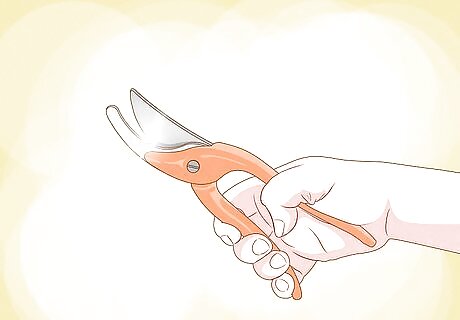
Use sharp gardening shears. Look for gardening shears at your local gardening supply store or online. The shears should be clean and sharp so you can trim the tree properly. Do not use shears that have already been used on plants that have any diseases or pests, as they can then transfer to the tree. Clean the shears with water or use a different pair of shears just for the money tree.
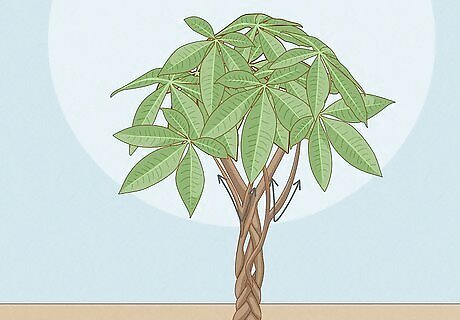
Find two branches that form a V-shape off the trunk. Look for two branches that extend out from the trunk of the tree to form a V-shape. Place your finger above the V-shape to mark it so you know where to cut. Pruning the tree at the V-shape will ensure the tree maintains its shape and growth.
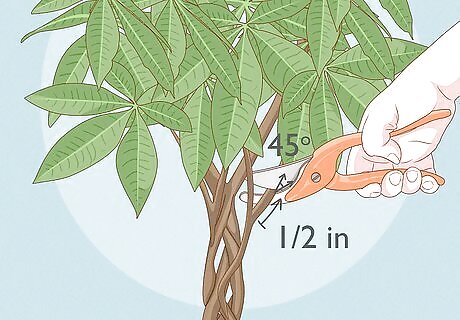
Cut the trunk ⁄2 inch (1.3 cm) above the V-shaped branches. Hold the gardening shears at a 45 degree angle as you cut the trunk. Make a clean cut to remove excess branches and leaves.
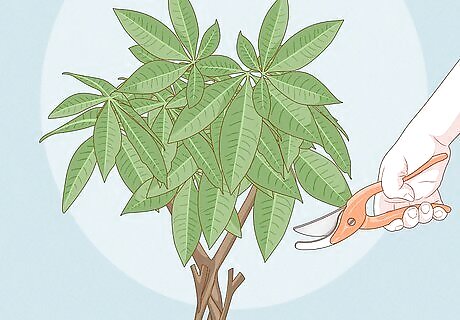
Remove branches on the top and sides of the tree. Work your way around the tree, cutting branches off the top and sides of the tree that appear overgrown. Make sure you cut ⁄2 inch (1.3 cm) above V-shaped branches on the trunk of the tree.

Prune off any branches with dry or brown leaves. If you notice the tree has dead, dry, or brown leaves, trim the off by cutting them off at the stem at a 45 degree angle. Make sure you leave at least ⁄2 inch (1.3 cm) of growth on the stem so it can grow back fuller and healthier./

Trim the tree down to no more than half its size. Err on the side of caution and trim the tree a little at a time. Remove a few overgrown branches and any brown leaves. Then, step back and look over the shape of the tree. If the tree still looks uneven in shape, trim off more branches until it looks more uniform. Do not remove too many branches or leaves, as this can stunt the growth of the tree. Remove a little at a time, rather than a lot of the tree at once.
Maintaining the Tree

Pinch and trim the tree regularly to prevent overgrowth. If you notice new buds are forming on the branches of the trees, use your thumb and forefinger to pinch them slightly so they grow well. You can also remove any overgrown branches with gardening shears to keep the tree in check and encourage healthy growth.
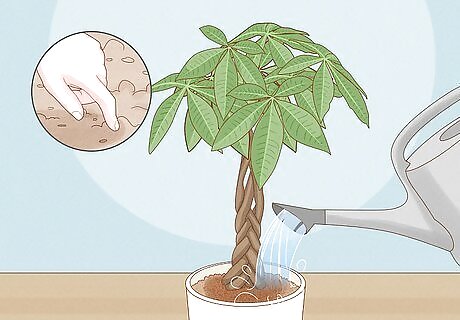
Water the tree’s roots when the soil is dry to the touch. Use a watering can or jug with a long neck to get to the roots of the plant, as getting water on the stem or leaves can cause rot and attract pests to the tree. Only water the tree’s roots when the soil feels dry, as you do not want to overwater the tree. Water the tree less during the winter months so it does not develop root rot.
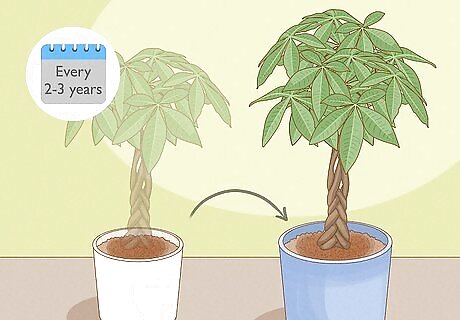
Repot the tree every 2-3 years. If you notice the tree’s root system has filled the pot, you may need to repot the tree. Time the repotting for the mid-summer months. Remove the tree and the soil from the pot. Use clean gardening shears to prune back 1/4 of the roots. Then, place the tree in a new pot with drainage holes or gravel and fresh soil. Water the money tree well after you repot it to encourage growth. You can submerge the entire pot in a tub of water or use a watering can to water the roots well.




















Comments
0 comment